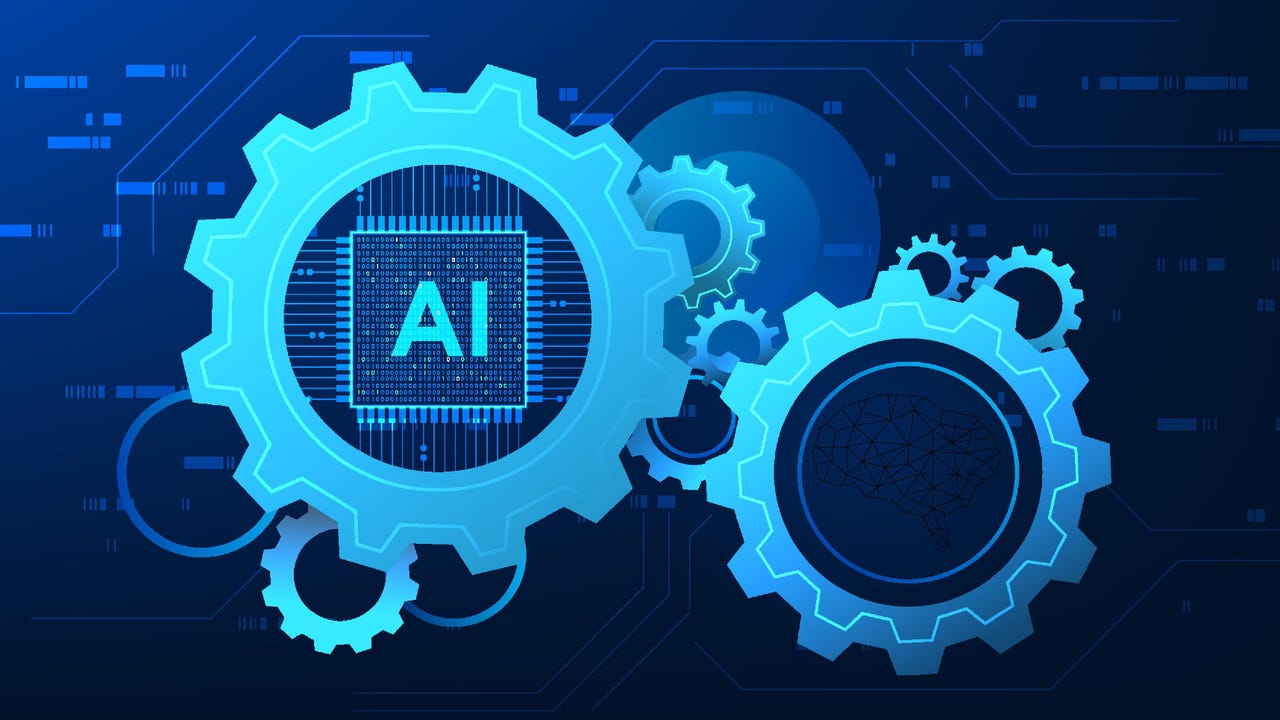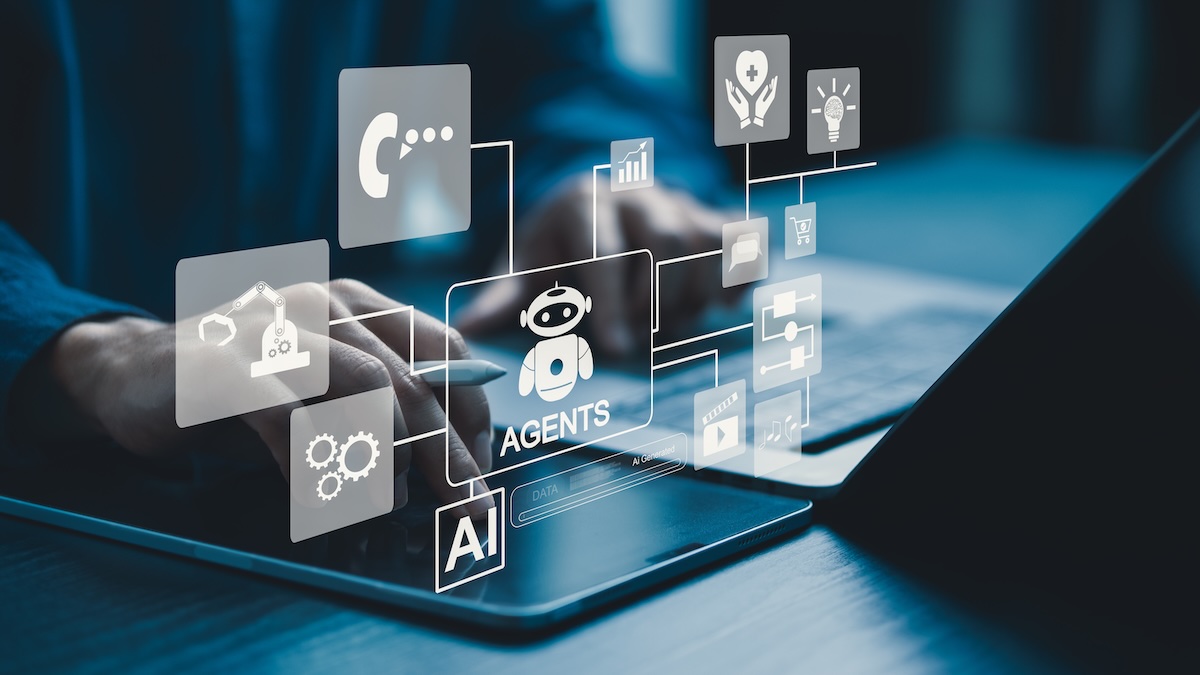Quote for the day:
“Rarely have I seen a situation where doing less than the other guy is a good strategy.” -- Jimmy Spithill
Emerging Infrastructure Transformations in AI Adoption
 Balanced scaling of infrastructure storage and compute clusters optimizes
resource use in the face of emerging elastic use cases. Throughput, latency,
scalability, and resiliency are key metrics for measuring storage performance.
Scaling storage with demand for AI solutions without contributing to technical
debt is a careful balance to contemplate for infrastructure transformations. ...
Data governance in AI extends beyond traditional access control. ML workflows
have additional governance tasks such as lineage tracking, role-based
permissions for model modification, and policy enforcement over how data is
labeled, versioned, and reused. This includes dataset documentation, drift
tracking, and LLM-specific controls over prompt inputs and generated outputs.
Governance frameworks that support continuous learning cycles are more valuable:
Every inference and user correction can become training data. ... As models
become more stateful and retain context over time, pipelines must support
real-time, memory-intensive operations. Even Apache Spark documentation hints at
future support for stateful algorithms (models that maintain internal memory of
past interactions), reflecting a broader industry trend. AI workflows are moving
toward stateful "agent" models that can handle ongoing, contextual tasks rather
than stateless, single-pass processing.
Balanced scaling of infrastructure storage and compute clusters optimizes
resource use in the face of emerging elastic use cases. Throughput, latency,
scalability, and resiliency are key metrics for measuring storage performance.
Scaling storage with demand for AI solutions without contributing to technical
debt is a careful balance to contemplate for infrastructure transformations. ...
Data governance in AI extends beyond traditional access control. ML workflows
have additional governance tasks such as lineage tracking, role-based
permissions for model modification, and policy enforcement over how data is
labeled, versioned, and reused. This includes dataset documentation, drift
tracking, and LLM-specific controls over prompt inputs and generated outputs.
Governance frameworks that support continuous learning cycles are more valuable:
Every inference and user correction can become training data. ... As models
become more stateful and retain context over time, pipelines must support
real-time, memory-intensive operations. Even Apache Spark documentation hints at
future support for stateful algorithms (models that maintain internal memory of
past interactions), reflecting a broader industry trend. AI workflows are moving
toward stateful "agent" models that can handle ongoing, contextual tasks rather
than stateless, single-pass processing. The rise of the creative cybercriminal: Leveraging data visibility to combat them
In response to the evolving cyber threats faced by organisations and governments, a comprehensive approach that addresses both the human factor and their IT systems is essential. Employee training in cybersecurity best practices, such as adopting a zero-trust approach and maintaining heightened vigilance against potential threats, like social engineering attacks, are crucial. Similarly, cybersecurity analysts and Security Operations Centres (SOCs) play a pivotal role by utilising Security Information and Event Management (SIEM) solutions to continuously monitor IT systems, identifying potential threats, and accelerating their investigation and response times. Given that these tasks can be labor-intensive, integrating a modern SIEM solution that harnesses generative AI (GenAI) is essential. ... By integrating GenAI's data processing capabilities with an advanced search platform, cybersecurity teams can search at scale across vast amounts of data, including unstructured data. This approach supports critical functions such as monitoring, compliance, threat detection, prevention, and incident response. With full-stack observability, or in other words, complete visibility across every layer of their technology stack, security teams can gain access to content-aware insights, and the platform can swiftly flag any suspicious activity.How to secure digital trust amid deepfakes and AI
 To ensure resilience in the shifting cybersecurity landscape, organizations
should proactively adopt a hybrid fraud-prevention approach, strategically
integrating AI solutions with traditional security measures to build robust,
layered defenses. Ultimately, a comprehensive, adaptive, and collaborative
security framework is essential for enterprises to effectively safeguard
against increasingly sophisticated cyberattacks – and there are several
preemptive strategies organizations must leverage to counteract threats and
strengthen their security posture. ... Fraudsters are adaptive, usually
leveraging both advanced methods (deepfakes and synthetic identities) and
simpler techniques (password spraying and phishing) to exploit
vulnerabilities. By combining AI with tools like strong and continuous
authentication, behavioral analytics, and ongoing user education,
organizations can build a more resilient defense system. This hybrid approach
ensures that no single point of failure exposes the entire system, and that
both human and machine vulnerabilities are addressed. Recent threats rely
on social engineering to obtain credentials, bypass authentication, and steal
sensitive data, and it is evolving along with AI. Utilizing real-time
verification techniques, such as liveness detection, can reliably distinguish
between legitimate users and deepfake impersonators.
To ensure resilience in the shifting cybersecurity landscape, organizations
should proactively adopt a hybrid fraud-prevention approach, strategically
integrating AI solutions with traditional security measures to build robust,
layered defenses. Ultimately, a comprehensive, adaptive, and collaborative
security framework is essential for enterprises to effectively safeguard
against increasingly sophisticated cyberattacks – and there are several
preemptive strategies organizations must leverage to counteract threats and
strengthen their security posture. ... Fraudsters are adaptive, usually
leveraging both advanced methods (deepfakes and synthetic identities) and
simpler techniques (password spraying and phishing) to exploit
vulnerabilities. By combining AI with tools like strong and continuous
authentication, behavioral analytics, and ongoing user education,
organizations can build a more resilient defense system. This hybrid approach
ensures that no single point of failure exposes the entire system, and that
both human and machine vulnerabilities are addressed. Recent threats rely
on social engineering to obtain credentials, bypass authentication, and steal
sensitive data, and it is evolving along with AI. Utilizing real-time
verification techniques, such as liveness detection, can reliably distinguish
between legitimate users and deepfake impersonators. Why Generative AI's Future Isn't in the Cloud
Instead of telling customers they needed to bring their data to the AI in the
cloud, we decided to bring AI to the data where it's created or resides,
locally on-premises or at the edge. We flipped the model by bringing
intelligence to the edge, making it self-contained, secure and ready to
operate with zero dependency on the cloud. That's not just a performance
advantage in terms of latency, but in defense and sensitive use cases, it's a
requirement. ... The cloud has driven incredible innovation, but it's created
a monoculture in how we think about deploying AI. When your entire stack
depends on centralized compute and constant connectivity, you're inherently
vulnerable to outages, latency, bandwidth constraints, and, in defense
scenarios, active adversary disruption. The blind spot is that this fragility
is invisible until it fails, and by then the cost of that failure can be
enormous. We're proving that edge-first AI isn't just a defense-sector niche,
it's a resilience model every enterprise should be thinking about. ... The
line between commercial and military use of AI is blurring fast. As a company
operating in this space, how do you navigate the dual-use nature of your tech
responsibly? We consider ourselves a dual-use defense technology company and
we also have enterprise customers. Being dual use actually helps us build
better products for the military because our products are also tested and
validated by commercial customers and partners.
Why DEI Won't Die: The Benefits of a Diverse IT Workforce
 For technology teams, diversity is a strategic imperative that drives better
business outcomes. In IT, diverse leadership teams generate 19% more revenue
from innovation, solve complex problems faster, and design products that better
serve global markets — driving stronger adoption, retention of top talent, and a
sustained competitive edge. Zoya Schaller, director of cybersecurity compliance
at Keeper Security, says that when a team brings together people with different
life experiences, they naturally approach challenges from unique perspectives.
... Common missteps, according to Ellis, include over-focusing on meeting
diversity hiring targets without addressing the retention, development, and
advancement of underrepresented technologists. "Crafting overly broad or
tokenistic job descriptions can fail to resonate with specific tech talent
communities," she says. "Don't treat DEI as an HR-only initiative but rather
embed it into engineering and leadership accountability." Schaller cautions that
bias often shows up in subtle ways — how résumés are reviewed, who is selected
for interviews, or even what it means to be a "culture fit." ... Leaders should
be active champions of inclusivity, as it is an ongoing commitment that requires
consistent action and reinforcement from the top.
For technology teams, diversity is a strategic imperative that drives better
business outcomes. In IT, diverse leadership teams generate 19% more revenue
from innovation, solve complex problems faster, and design products that better
serve global markets — driving stronger adoption, retention of top talent, and a
sustained competitive edge. Zoya Schaller, director of cybersecurity compliance
at Keeper Security, says that when a team brings together people with different
life experiences, they naturally approach challenges from unique perspectives.
... Common missteps, according to Ellis, include over-focusing on meeting
diversity hiring targets without addressing the retention, development, and
advancement of underrepresented technologists. "Crafting overly broad or
tokenistic job descriptions can fail to resonate with specific tech talent
communities," she says. "Don't treat DEI as an HR-only initiative but rather
embed it into engineering and leadership accountability." Schaller cautions that
bias often shows up in subtle ways — how résumés are reviewed, who is selected
for interviews, or even what it means to be a "culture fit." ... Leaders should
be active champions of inclusivity, as it is an ongoing commitment that requires
consistent action and reinforcement from the top.The Future of Software Is Not Just Faster Code - It's Smarter Organizations
Using AI effectively doesn't just mean handing over tasks. It requires developers to work alongside AI tools in a more thoughtful way — understanding how to write structured prompts, evaluate AI-generated results and iterate them based on context. This partnership is being pushed even further with agentic AI. Agentic systems can break a goal into smaller steps, decide the best order to tackle them, tap into multiple tools or models, and adapt in real time without constant human direction. For developers, this means AI can do more than suggesting code. It can act like a junior teammate who can design, implement, test and refine features on its own. ... But while these tools are powerful, they're not foolproof. Like other AI applications, their value depends on how well they're implemented, tuned and interpreted. That's where AI-literate developers come in. It's not enough to simply plug in a tool and expect it to catch every threat. Developers need to understand how to fine-tune these systems to their specific environments — configuring scanning parameters to align with their architecture, training models to recognize application-specific risks and adjusting thresholds to reduce noise without missing critical issues. ... However, the real challenge isn't just finding AI talent, its reorganizing teams to get the most out of AI's capabilities.Industrial Copilots: From Assistants to Essential Team Members
 Behind the scenes, industrial copilots are supported by a technical stack that
includes predictive analytics, real-time data integration, and cross-platform
interoperability. These assistants do more than just respond — they help
automate code generation, validate engineering logic, and reduce the burden of
repetitive tasks. In doing so, they enable faster deployment of production
systems while improving the quality and efficiency of engineering work. Despite
these advances, several challenges remain. Data remains the bedrock of effective
copilots, yet many workers on the shop floor are still not accustomed to working
with data directly. Upskilling and improving data literacy among frontline staff
is critical. Additionally, industrial companies are learning that while not all
problems need AI, AI absolutely needs high-quality data to function well. An
important lesson shared during Siemens’ AI with Purpose Summit was the
importance of a data classification framework. To ensure copilots have access to
usable data without risking intellectual property or compliance violations, one
company adopted a color-coded approach: white for synthetic data (freely
usable), green for uncritical data (approval required), yellow for sensitive
information, and red for internal IP (restricted to internal use only).
Behind the scenes, industrial copilots are supported by a technical stack that
includes predictive analytics, real-time data integration, and cross-platform
interoperability. These assistants do more than just respond — they help
automate code generation, validate engineering logic, and reduce the burden of
repetitive tasks. In doing so, they enable faster deployment of production
systems while improving the quality and efficiency of engineering work. Despite
these advances, several challenges remain. Data remains the bedrock of effective
copilots, yet many workers on the shop floor are still not accustomed to working
with data directly. Upskilling and improving data literacy among frontline staff
is critical. Additionally, industrial companies are learning that while not all
problems need AI, AI absolutely needs high-quality data to function well. An
important lesson shared during Siemens’ AI with Purpose Summit was the
importance of a data classification framework. To ensure copilots have access to
usable data without risking intellectual property or compliance violations, one
company adopted a color-coded approach: white for synthetic data (freely
usable), green for uncritical data (approval required), yellow for sensitive
information, and red for internal IP (restricted to internal use only).
Will the future be Consolidated Platforms or Expanding Niches?
/dq/media/media_files/2025/08/28/will-the-future-be-consolidated-platforms-2025-08-28-12-43-37.jpg) Ramprakash Ramamoorthy believes enterprise SaaS is already making moves in
consolidation. “The initial stage of a hype cycle includes features disguised as
products and products disguised as companies. Well we are past that, many of
these organizations that delivered a single product have to go through either
vertical integration or sell out. In fact a lot of companies are mimicking those
single-product features natively on large platforms.” Ramamoorthy says he also
feels AI model providers will develop into enterprise SaaS organizations
themselves as they continue to capture the value proposition of user data and
usage signals for SaaS providers. This is why Zoho built their own AI
backbone—to keep pace with competitive offerings and to maintain independence.
On the subject of vibe-code and low-code tools, Ramamoorthy seems quite
clear-eyed about their suitability for mass-market production. “Vibe-code can
accelerate you from 0 to 1 faster, but particularly with the increase in
governance and privacy, you need additional rigor. For example, in India, we
have started to see compliance as a framework.” In terms of the best generative
tools today, he observes “Anytime I see a UI or content generated by AI—I can
immediately recognize the quality that is just not there yet.”
Ramprakash Ramamoorthy believes enterprise SaaS is already making moves in
consolidation. “The initial stage of a hype cycle includes features disguised as
products and products disguised as companies. Well we are past that, many of
these organizations that delivered a single product have to go through either
vertical integration or sell out. In fact a lot of companies are mimicking those
single-product features natively on large platforms.” Ramamoorthy says he also
feels AI model providers will develop into enterprise SaaS organizations
themselves as they continue to capture the value proposition of user data and
usage signals for SaaS providers. This is why Zoho built their own AI
backbone—to keep pace with competitive offerings and to maintain independence.
On the subject of vibe-code and low-code tools, Ramamoorthy seems quite
clear-eyed about their suitability for mass-market production. “Vibe-code can
accelerate you from 0 to 1 faster, but particularly with the increase in
governance and privacy, you need additional rigor. For example, in India, we
have started to see compliance as a framework.” In terms of the best generative
tools today, he observes “Anytime I see a UI or content generated by AI—I can
immediately recognize the quality that is just not there yet.”
Beyond the Prompt: Building Trustworthy Agent Systems
 While a basic LLM call responds statically to a single prompt, an agent system
plans. It breaks down a high-level goal into subtasks, decides on tools or data
needed, executes steps, evaluates outcomes, and iterates – potentially over long
timeframes and with autonomy. This dynamism unlocks immense potential but can
introduce new layers of complexity and security risk. ... Technology controls
are vital but not comprehensive. That’s because the most sophisticated agent
system can be undermined by human error or manipulation. This is where
principles of human risk management become critical. Humans are often the
weakest link. How does this play out with agents? Agents should operate with
clear visibility. Log every step, every decision point, every data access. Build
dashboards showing the agent’s “thought process” and actions. Enable safe
interruption points. Humans must be able to audit, understand, and stop the
agent when necessary. ... The allure of agentic AI is undeniable. The promise of
automating complex workflows, unlocking insights, and boosting productivity is
real. But realizing this potential without introducing unacceptable risk
requires moving beyond experimentation into disciplined engineering. It means
architecting systems with context, security, and human oversight at their
core.
While a basic LLM call responds statically to a single prompt, an agent system
plans. It breaks down a high-level goal into subtasks, decides on tools or data
needed, executes steps, evaluates outcomes, and iterates – potentially over long
timeframes and with autonomy. This dynamism unlocks immense potential but can
introduce new layers of complexity and security risk. ... Technology controls
are vital but not comprehensive. That’s because the most sophisticated agent
system can be undermined by human error or manipulation. This is where
principles of human risk management become critical. Humans are often the
weakest link. How does this play out with agents? Agents should operate with
clear visibility. Log every step, every decision point, every data access. Build
dashboards showing the agent’s “thought process” and actions. Enable safe
interruption points. Humans must be able to audit, understand, and stop the
agent when necessary. ... The allure of agentic AI is undeniable. The promise of
automating complex workflows, unlocking insights, and boosting productivity is
real. But realizing this potential without introducing unacceptable risk
requires moving beyond experimentation into disciplined engineering. It means
architecting systems with context, security, and human oversight at their
core.
No comments:
Post a Comment